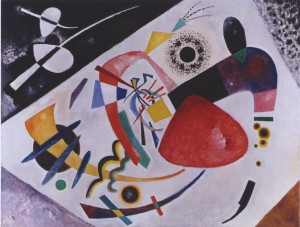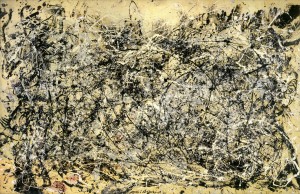
Kandinsky: Tactical, Operational, Strategic
Imagine two surfaces: one, a flat stretch of canvas secured to a physical support; the other, a picture plane. What’s the difference? The canvas is an actual piece of fabric upon which a painter will apply physical material with brushes, rags, and trowels to render an image, whether abstract or representational. The picture plane is an immaterial and intangible screen of pictorial projection. The image that sustains the virtual reality of the depiction is neither identical to nor reducible to the pigment and canvas that literally constitute its configuration.



